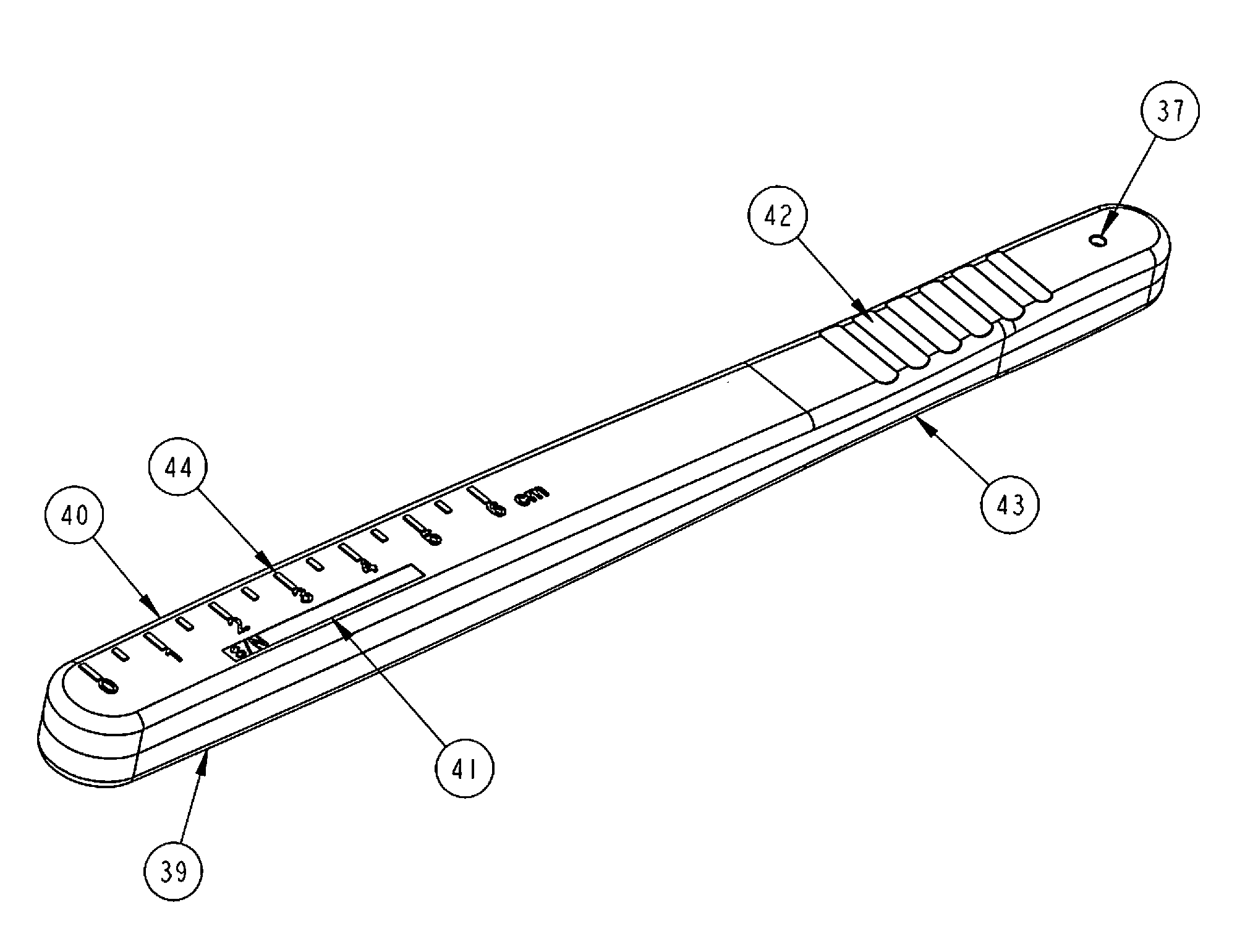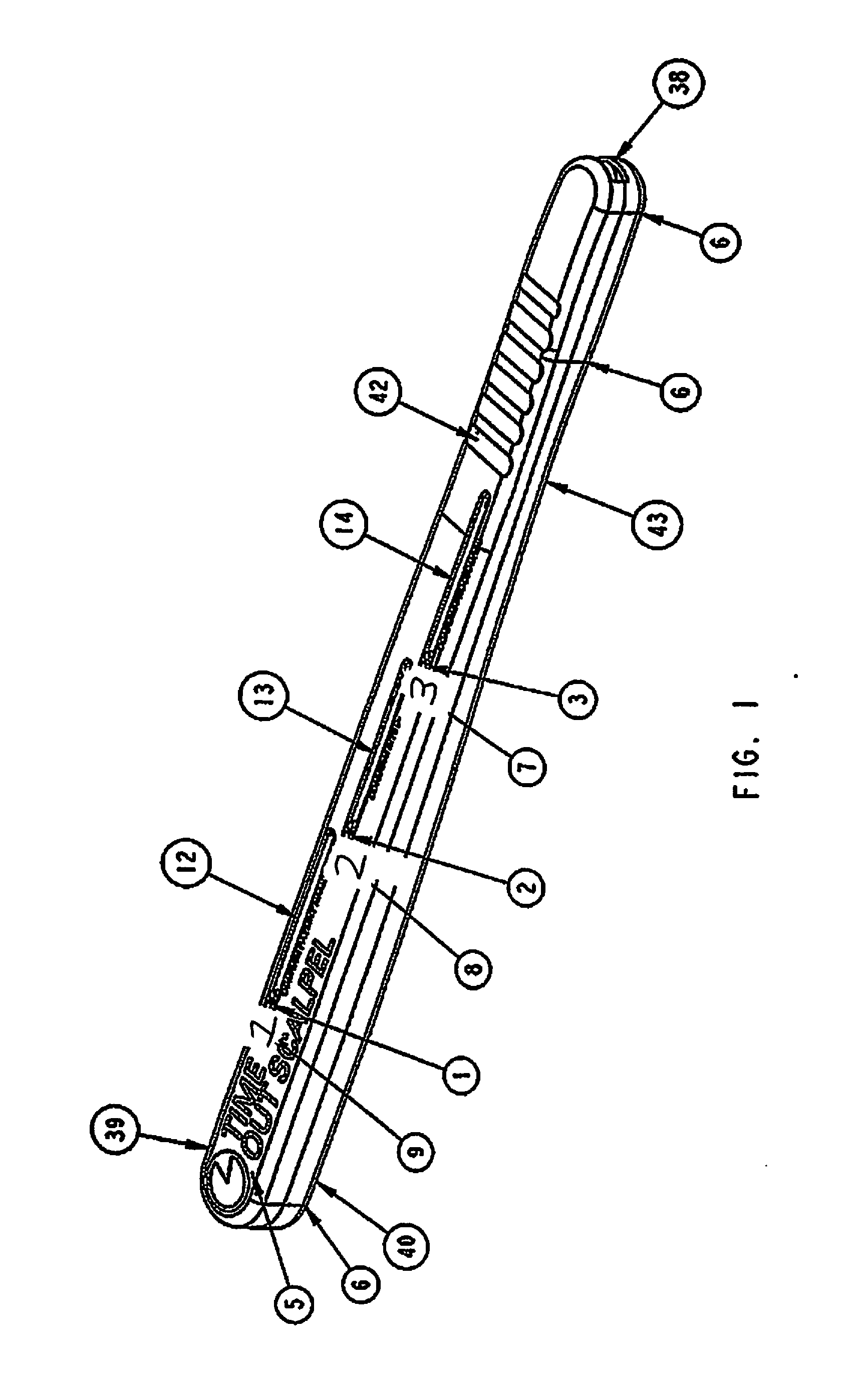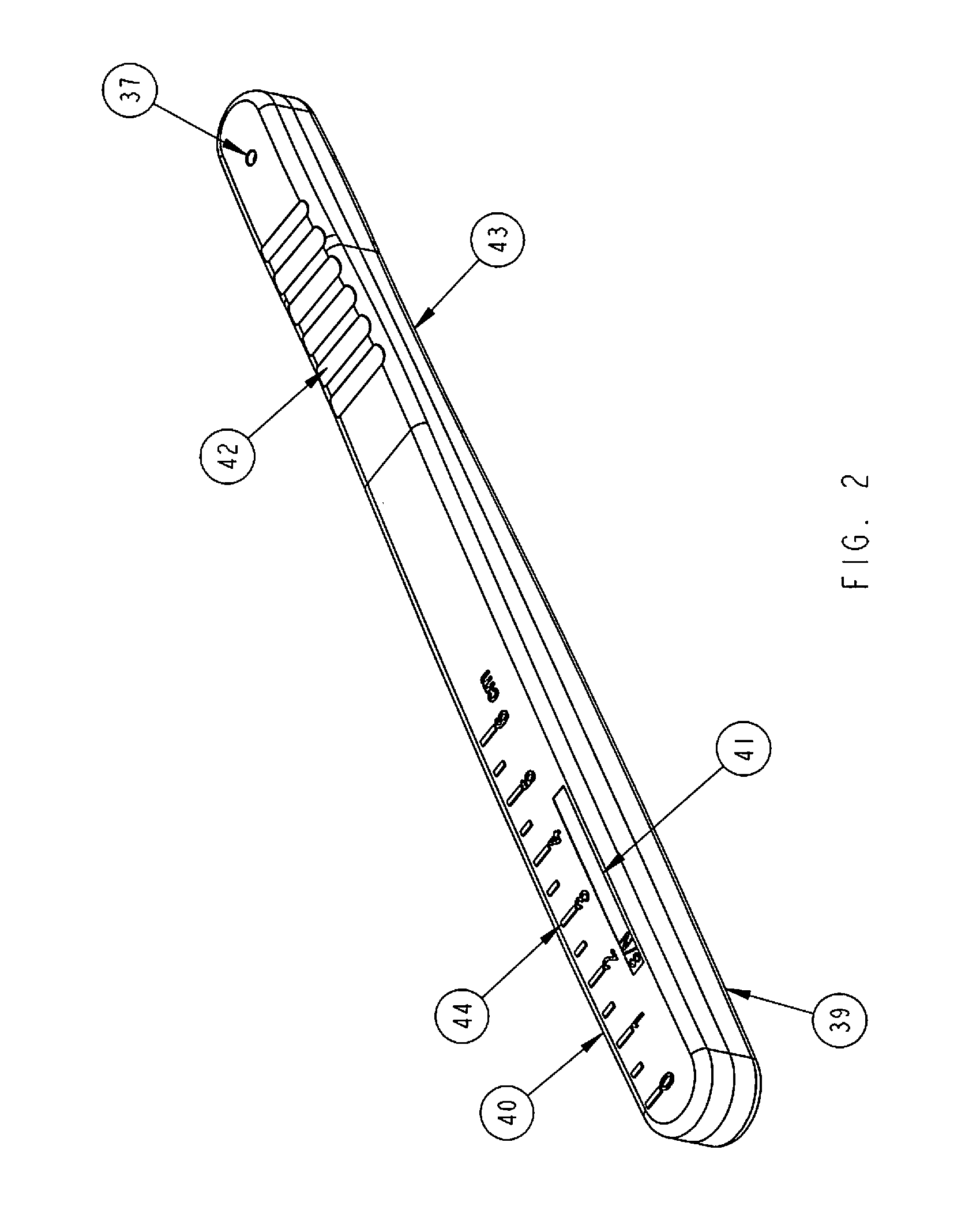Surgical Scalpel Handle Assembly System And Method For Requiring A Verification Process Performed Prior To And During Surgery Using Actuators to Unlock And Engage Blade Holder in Ready For Cutting Position
a scalpel handle and actuator technology, applied in the direction of rod connections, incision instruments, applications, etc., can solve the problems of affecting the surgical outcome, and being significantly underreported, so as to reduce the wrong site and wrong patient surgery
- Summary
- Abstract
- Description
- Claims
- Application Information
AI Technical Summary
Benefits of technology
Problems solved by technology
Method used
Image
Examples
Embodiment Construction
[0025]The present invention is directed to a surgical scalpel handle assembly system and method for using a scalpel handle assembly to perform a pre-operative verification process known as a surgical “time out”. Wrong site and wrong patient surgeries continue to occur in outpatient, inpatient and operative room settings. Despite recommendations and guidelines to require surgeons and their staff to perform a verification process known as a “time out” wherein an active confirmation of the patient's name, procedure and site of procedure are confirmed before proceeding with surgery, wrong site or wrong patient surgeries continue to occur and the predominant cause is failure of surgeon and staff to take a surgical “time out”. Impulsivity, workload, carelessness, over scheduling and the need to perform multiple surgeries on multiple patients in the same day contribute to surgeons haste and not taking the time to perform a surgical “time out.”
[0026]The present invention is a surgical scalp...
PUM
 Login to View More
Login to View More Abstract
Description
Claims
Application Information
 Login to View More
Login to View More - R&D
- Intellectual Property
- Life Sciences
- Materials
- Tech Scout
- Unparalleled Data Quality
- Higher Quality Content
- 60% Fewer Hallucinations
Browse by: Latest US Patents, China's latest patents, Technical Efficacy Thesaurus, Application Domain, Technology Topic, Popular Technical Reports.
© 2025 PatSnap. All rights reserved.Legal|Privacy policy|Modern Slavery Act Transparency Statement|Sitemap|About US| Contact US: help@patsnap.com



